Abstract
Seventeen patients with clinical chronic obstructive pulmonary disease (COPD) who required aortic reconstruction underwent preoperative pulmonary function testing that categorized them as extremely high risk for pulmonary complications. Ten patients (Group 1) received perioperative steroids and seven patients (Group 2) received no perioperative adjunctive steroids. The mean forced expiratory volume (FEV 1) was 45% of the predicted value in Group 1 patients and 47% in Group 2 patients. The forced expiratory flow (25% to 75%) was severely restricted in both groups: 0.47 liters per second in Group 1 (16% +/- 6% predicted value) and 0.53 liters per second (20% +/- 7% predicted value) in Group 2 patients. Using a regimen consisting of preoperative pulmonary physiotherapy, optimization of theophylline levels, and early postoperative extubation with initiation of postoperative physiotherapy resulted in survival in all cases. There did not appear to be a clear advantage to the use of adjunctive perioperative steroids. The overall incidence of pulmonary complications was 22%. Four patients died during the follow-up interval. The remaining 13 patients were alive at a mean follow-up interval of 35 months. Using a number of adjunctive techniques, successful aortic reconstruction can be accomplished in many patients with severe COPD, and the majority will survive for extended periods after operation despite their impaired pulmonary function.
Full text
PDF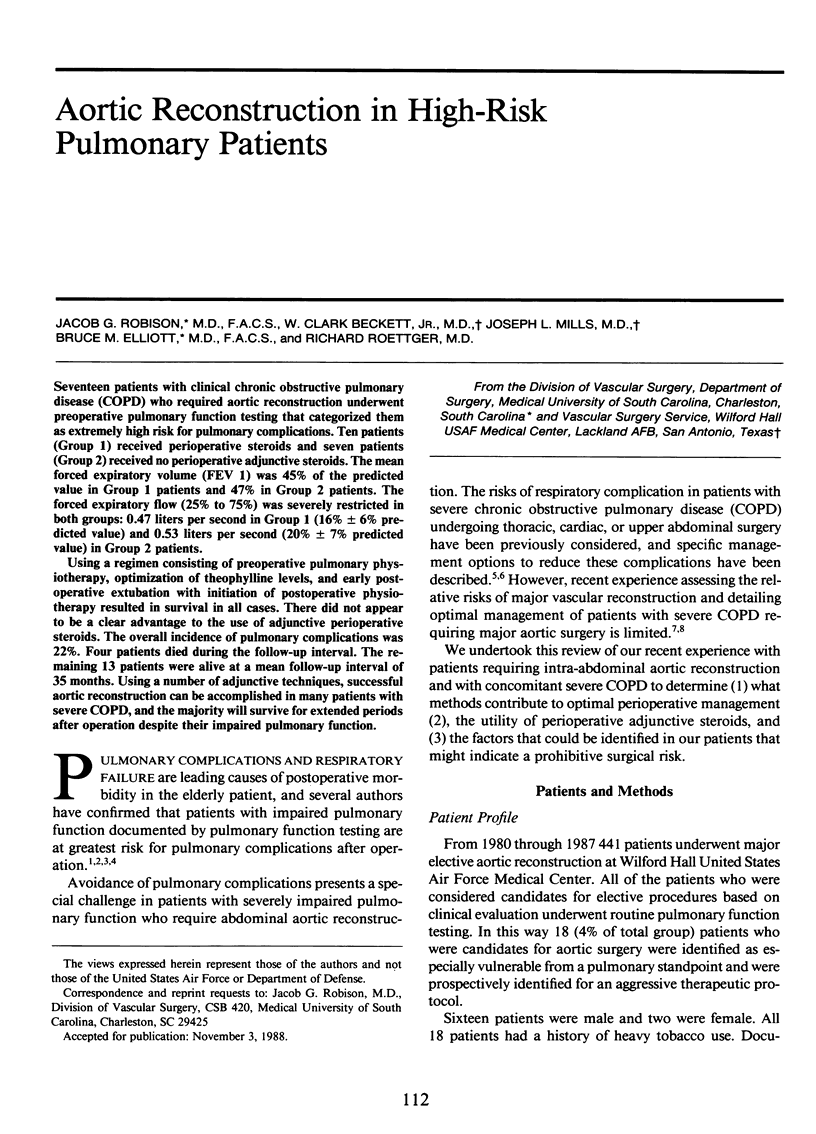
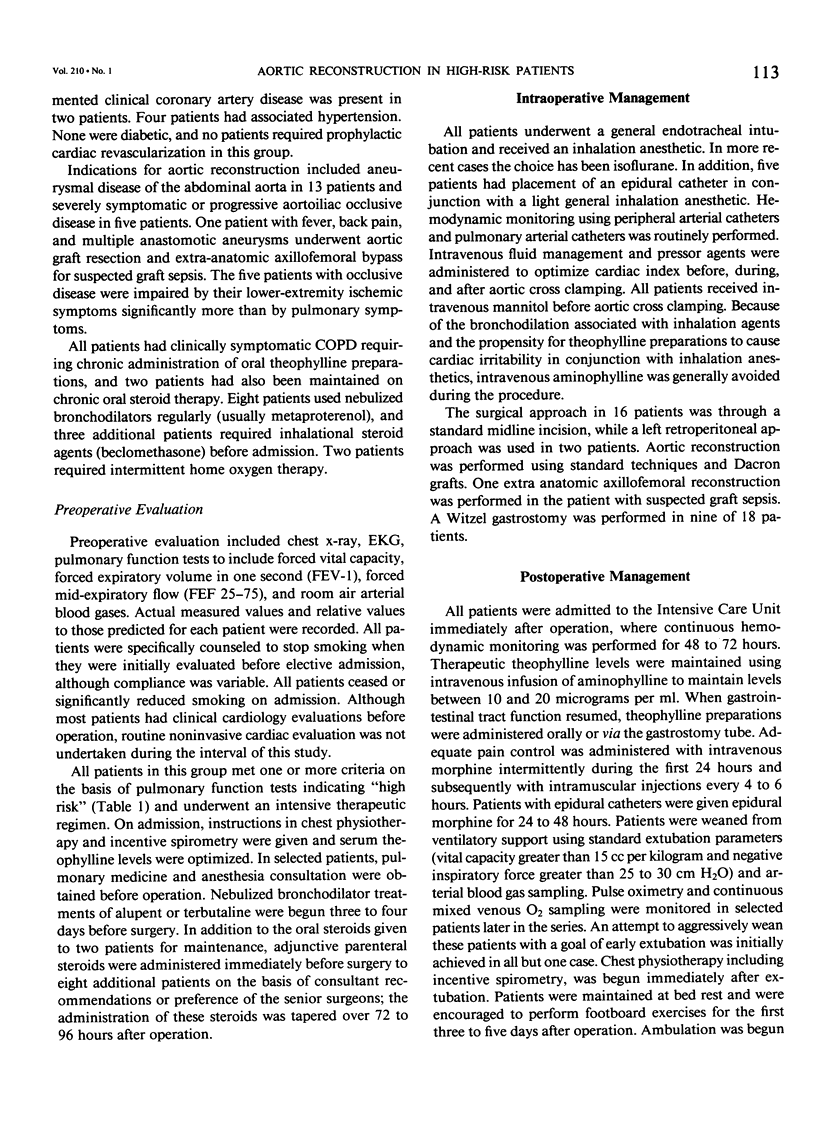
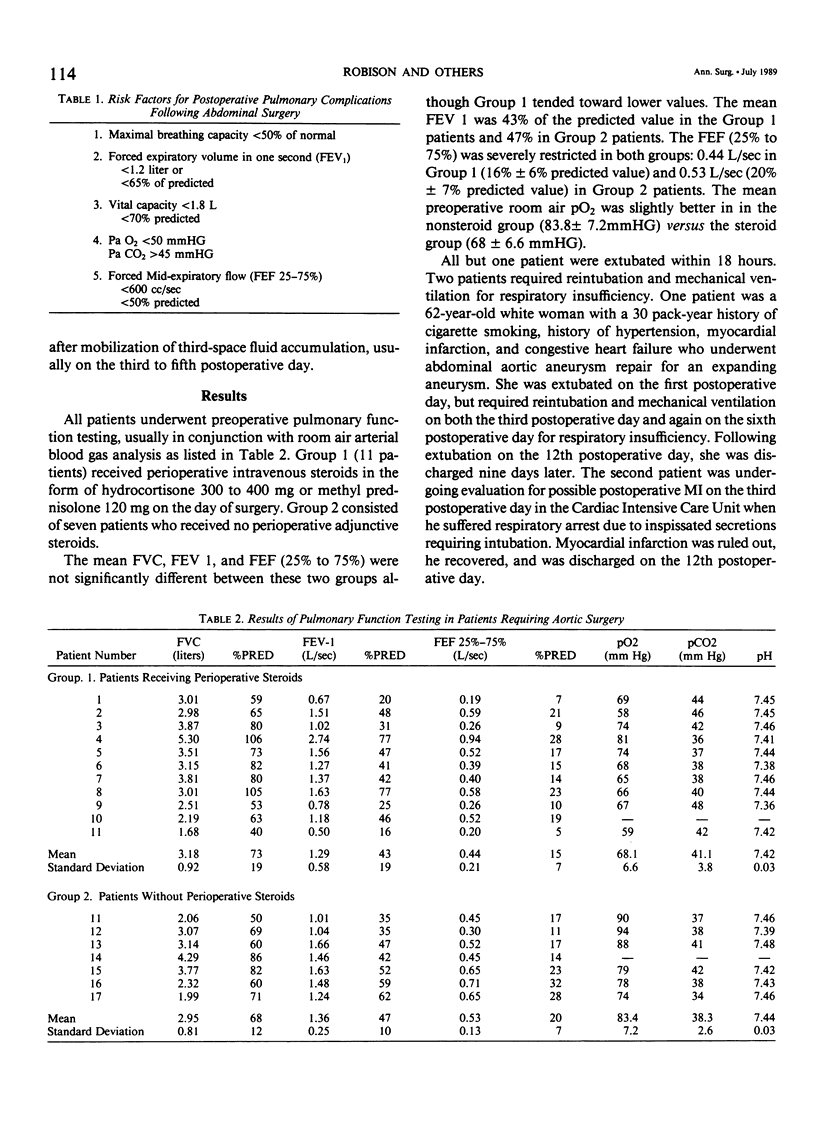
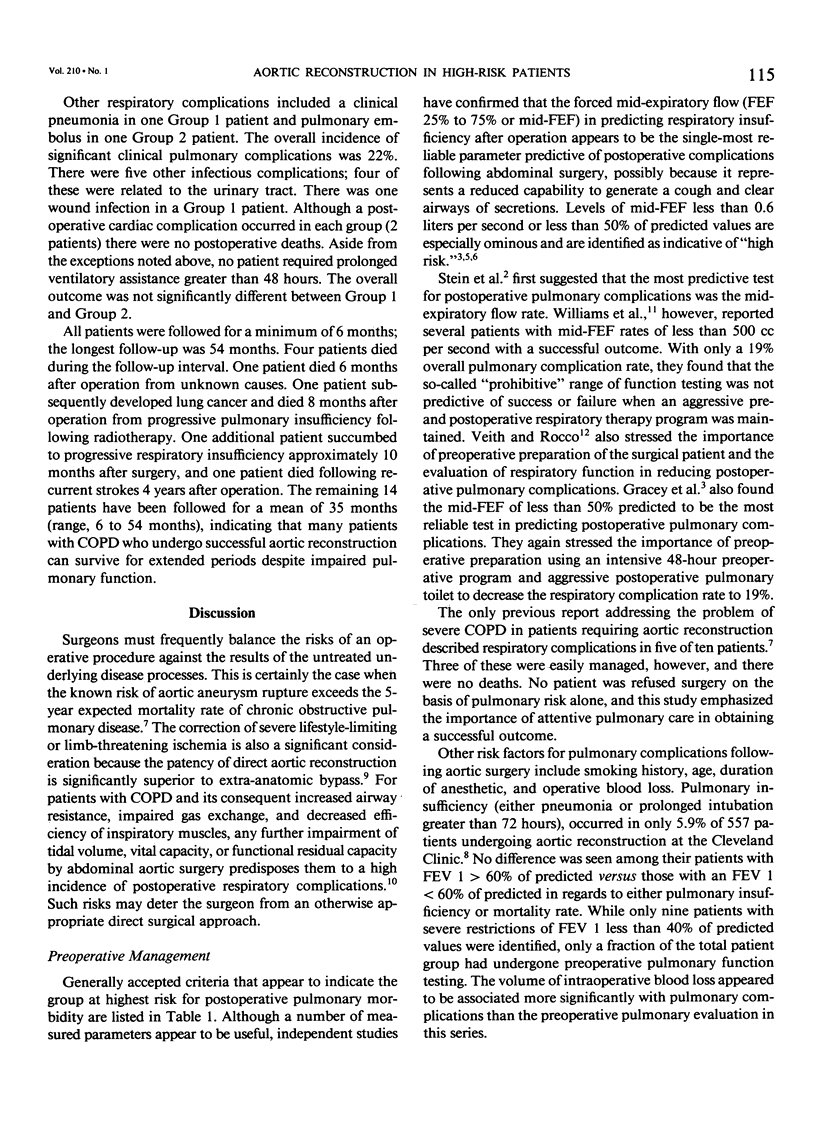
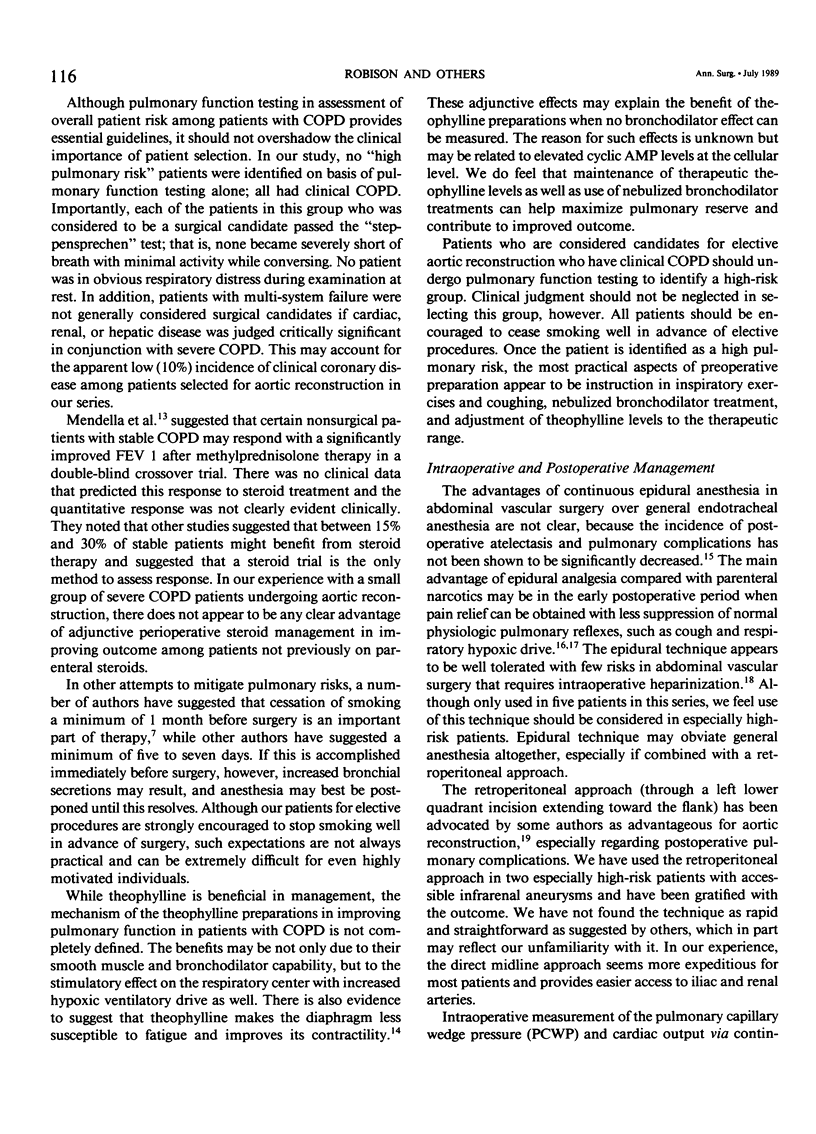
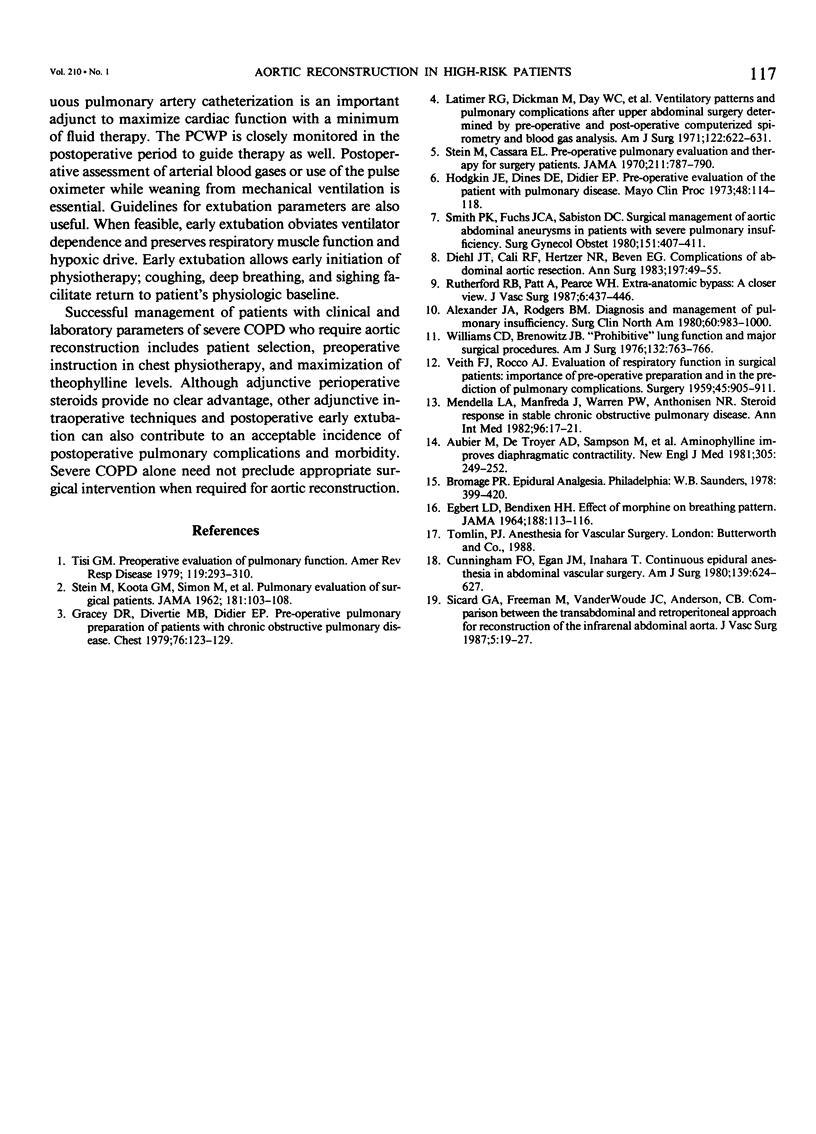
Selected References
These references are in PubMed. This may not be the complete list of references from this article.
- Alexander J. A., Rodgers B. M. Diagnosis and management of pulmonary insufficiency. Surg Clin North Am. 1980 Aug;60(4):983–1001. doi: 10.1016/s0039-6109(16)42195-x. [DOI] [PubMed] [Google Scholar]
- Aubier M., De Troyer A., Sampson M., Macklem P. T., Roussos C. Aminophylline improves diaphragmatic contractility. N Engl J Med. 1981 Jul 30;305(5):249–252. doi: 10.1056/NEJM198107303050503. [DOI] [PubMed] [Google Scholar]
- Cunningham F. O., Egan J. M., Inahara T. Continuous epidural anesthesia in abdominal vascular surgery. A review of 100 consecutive cases. Am J Surg. 1980 May;139(5):624–627. doi: 10.1016/0002-9610(80)90349-9. [DOI] [PubMed] [Google Scholar]
- Diehl J. T., Cali R. F., Hertzer N. R., Beven E. G. Complications of abdominal aortic reconstruction. An analysis of perioperative risk factors in 557 patients. Ann Surg. 1983 Jan;197(1):49–56. [PMC free article] [PubMed] [Google Scholar]
- Gracey D. R., Divertie M. B., Didier E. P. Preoperative pulmonary preparation of patients with chronic obstructive pulmonary disease: a prospective study. Chest. 1979 Aug;76(2):123–129. doi: 10.1378/chest.76.2.123. [DOI] [PubMed] [Google Scholar]
- Hodgkin J. E., Dines D. E., Didier E. P. Preoperative evaluation of the patient with pulmonary disease. Mayo Clin Proc. 1973 Feb;48(2):114–118. [PubMed] [Google Scholar]
- Latimer R. G., Dickman M., Day W. C., Gunn M. L., Schmidt C. D. Ventilatory patterns and pulmonary complications after upper abdominal surgery determined by preoperative and postoperative computerized spirometry and blood gas analysis. Am J Surg. 1971 Nov;122(5):622–632. doi: 10.1016/0002-9610(71)90290-x. [DOI] [PubMed] [Google Scholar]
- Mendella L. A., Manfreda J., Warren C. P., Anthonisen N. R. Steroid response in stable chronic obstructive pulmonary disease. Ann Intern Med. 1982 Jan;96(1):17–21. doi: 10.7326/0003-4819-96-1-17. [DOI] [PubMed] [Google Scholar]
- Rutherford R. B., Patt A., Pearce W. H. Extra-anatomic bypass: a closer view. J Vasc Surg. 1987 Nov;6(5):437–446. [PubMed] [Google Scholar]
- Sicard G. A., Freeman M. B., VanderWoude J. C., Anderson C. B. Comparison between the transabdominal and retroperitoneal approach for reconstruction of the infrarenal abdominal aorta. J Vasc Surg. 1987 Jan;5(1):19–27. doi: 10.1067/mva.1987.avs0050019. [DOI] [PubMed] [Google Scholar]
- Smith P. K., Fuchs J. C., Sabiston D. C. Surgical management of aortic abdominal aneurysms in patients with severe pulmonary insufficiency. Surg Gynecol Obstet. 1980 Sep;151(3):407–411. [PubMed] [Google Scholar]
- Stein M., Cassara E. L. Preoperative pulmonary evaluation and therapy for surgery patients. JAMA. 1970 Feb 2;211(5):787–790. [PubMed] [Google Scholar]
- Tisi G. M. Preoperative evaluation of pulmonary function. Validity, indications, and benefits. Am Rev Respir Dis. 1979 Feb;119(2):293–310. doi: 10.1164/arrd.1979.119.2.293. [DOI] [PubMed] [Google Scholar]
- VEITH F. J., ROCCO A. G. Evaluation of respiratory function in surgical patients: importance in preoperative preparation and in the prediction of pulmonary complications. Surgery. 1959 Jun;45(6):905–911. [PubMed] [Google Scholar]
- Williams C. D., Brenowitz J. B. "Prohibitive" lung function and major surgical procedures. Am J Surg. 1976 Dec;132(6):763–766. doi: 10.1016/0002-9610(76)90454-2. [DOI] [PubMed] [Google Scholar]


